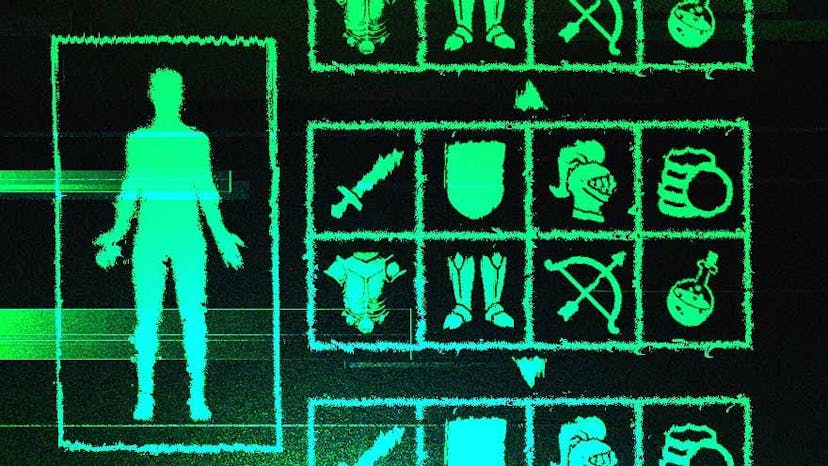Make NFTs a Gaming Tool Instead of a Sales Hustle
For Blockchain Games to Go Mainstream Creators Need to Do Better with NFTs
By: David Kim • Loading...
Research & Opinion
Decentralized technologies such as blockchain networks, cryptocurrencies, and non-fungible tokens (NFTs) are swiftly becoming an inextricable part of the internet, media and gaming sectors. Yet as new doors open and possibilities unlock, innovations such as Web3 and the metaverse may become just another set of overhyped buzzwords with nothing underneath them.
This is especially true for the global gaming industry. It has been relying on tried and tested frameworks and solutions for decades — disrupting it is no trivial task. While numerous game developers are integrating NFTs and “blockchain elements” into their projects, the very first question that comes up is: “Are they really necessary?”
While many game creators want to keep up with the times and jump on the latest hype train as soon as possible , the truth is that NFTs and blockchain in games go well beyond just checking another box on a feature list. For blockchain games to go mainstream, NFTs need to remain under the hood instead of being pushed as an over-hyped selling point.
Not for Profit
Adding decentralized elements such as NFTs should not be the be-all and end-all solution that will magically make a game popular and profitable.
Another misguided notion is that any blockchain asset absolutely must grow in price with time, giving players hope — and often a false one — that their in-game investments will result in profit.
As demonstrated by several popular blockchain games, economic models where ‘all players always profit’ are completely unsustainable.
In contrast, the purpose of putting blockchain into a game isn’t so that the value of its assets grows, but rather it provides users the option to own and sell their digital items to other people — regardless of whether for profit or at a loss. In fact, as demonstrated by several popular blockchain games, economic models where “all players always profit” are completely unsustainable.
The concept of trading in-game items isn’t new at all, but blockchain allows it to be taken to a new level.
For example, Steam, the world’s largest digital games store, opened its Community Market nearly a decade ago, allowing players to trade and exchange items from games such as Team Fortress 2, Counter-Strike: Global Offensive, Dota 2, and others.
However, the offer comes with numerous limitations, including the inability to withdraw real-world funds from Steam’s platform. Additionally, players don’t truly own the items they buy there, and if Steam itself were to go down for some reason, players would likely lose those in-game assets.
This is exactly what NFTs can fix.
Power to the player
Players and developers alike should break away from the mindset of “buying NFTs means asset value appreciation or guaranteed profit.” Instead, they should focus on other benefits that decentralized technologies bring to the table.
For instance, by integrating in-game items as NFTs, developers can allow players to truly take possession oftheir stuff, be it cosmetics, actual in-universe equipment, profile features like avatars, or anything else.
Because unlike Steam, which supports at least some kind of in-game item trading, most major publishers and developers don’t allow even that. For example, if you paid for cosmetic items in Overwatch or Fortnite, those items are now forever tied to your account until the end of time with almost no (legal) ways to recoup even a portion of the money you spent. This is especially the case since most game companies’ user agreements clearly and unilaterally forbid players from trading items or even full accounts.
Interoperable and Tradeable
Conversely, NFTs give players much more — although not unlimited — legal rights to their in-game items, including the ability to sell them as property. On top of that, legitimate decentralized trading platforms can significantly reduce the risks that come with buying and selling game related items on “gray” markets, such as ones for account trading, key reselling, or in game currency trading (a.k.a gold farming).
Furthermore, blockchain allows an option for these items to be interoperable and tradeable across different games and even networks. Of course, this requires some extra work, integration, and a lot of collaboration but it’s far easier to implement via NFTs and blockchain.
In essence, decentralized blockchains enable operators to let their players trade in-game items between each other for real money and in a secure and legal manner — removing the need for oftentimes monopolistic middlemen or having to set-up expensive systems to comply with complex and burdensome regulatory requirements.
In turn, this can help create a much more “engageable” ecosystem where users can fully participate in game economies without feeling “extorted.” This is why developers should think about adding blockchain and NFTs to their games, rather than for purposes of novelty or speculative hype.
David Kimis the head of publishing at WAX Studios, the gaming arm of the WAX Blockchain focussed on blockchain game development, NFT’s and innovative Web3 Products.
Advertisement
Get the best of The Defiant directly in your inbox 💌
Know what matters in Web3 with The Defiant Daily newsletter, every weekday
90k+ investors informed every day. Unsubscribe anytime.